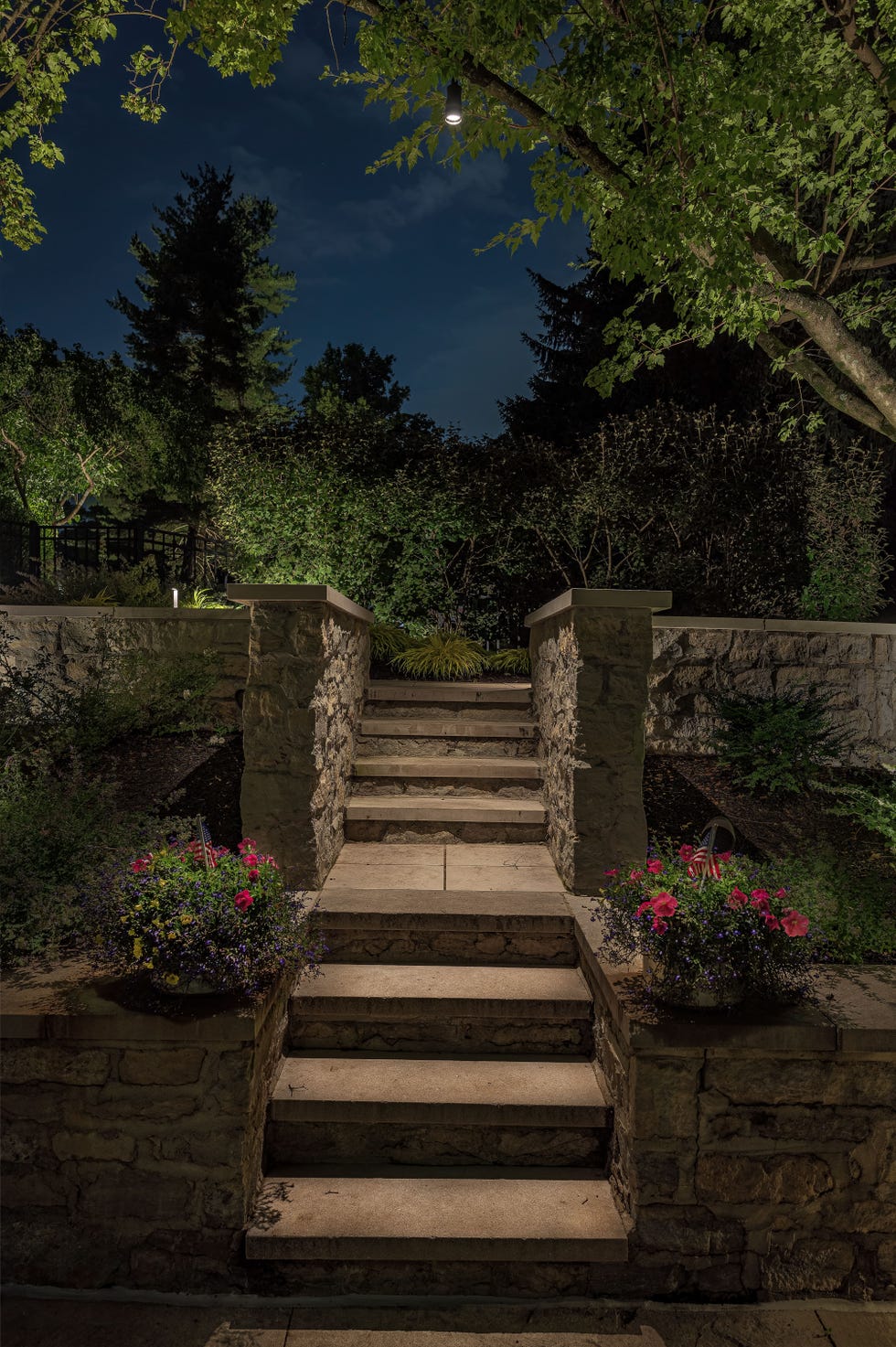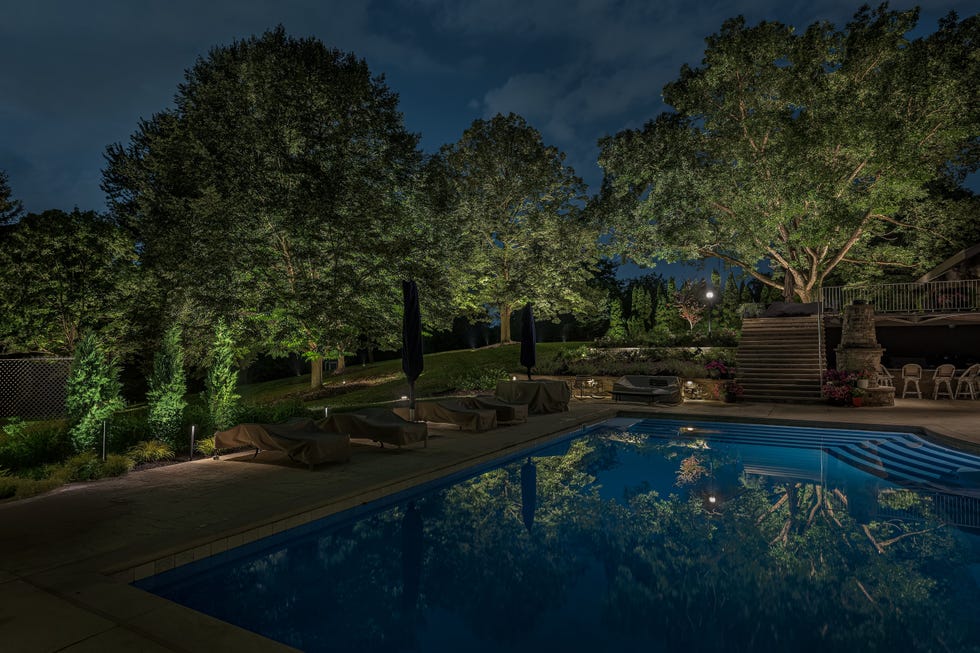When the sun disappears below the horizon, something happens in your garden that most of us never witness. Nocturnal flowers unfurl their petals. Pollinators emerge from the shadows. Plants shift into their most active growth phase. This is the secret world of gardens after dark.
Now a growing community of passionate gardeners is venturing into the darkness to discover some of nature’s most mysterious displays. Social media and in-person groups with thousands of members, such as “Night Gardeners,” share headlamp photos of moonflowers unfurling at dusk. Redditors gather on r/MoonGardening to trade tips on lunar-phase planting, and institutions from Longwood Gardens in Pennsylvania to the Atlanta Botanical Garden now run sellout “Night Garden” or “Garden Lights” tours. In Washington state, public relations director and self-described garden enthusiast Beth Adan discovered the hidden realm out of necessity. With a toddler at home, Adan and her husband began venturing into their garden only after bedtime. This practical solution evolved into something far more profound. “It turns out that it’s so much more peaceful gardening at night than during the day,” she says. “You get to see all kinds of different animals and insects, and I feel like the plants grow better when you plant them at night.”
 Beth Adan
Beth Adan
Beth Adan’s summer garden at dusk.
Her intuitive observation touches on something science is only beginning to understand. While most of us sleep, plants are undergoing their own biological processes. During the day, photosynthesis converts sunlight into energy. But at night, plants shift into a different mode, focusing on cellular respiration and growth. Research reveals that roughly one-third of all plant species exhibit circadian rhythms, with their activity waxing and waning in precise patterns throughout 24-hour cycles.
Indeed, plants do most of their growing at night. This activity creates perfect conditions for one of nature’s most sophisticated partnerships: the relationship between night-blooming plants and their pollinators. As Adan tends to her squash and herbs under the stars, an entirely different workforce takes over her garden. Moths, often dismissed as drab relatives of their colorful butterfly cousins, turn out to be efficient pollinators, moving and depositing pollen at faster rates during their shorter active periods. Recent research using DNA metabarcoding has revealed that moths visit more plant species than either bees or butterflies, interacting with 47 different plant types—many of which were previously unknown as moth-pollinated species.
The cast of night-blooming plants that attract these nocturnal workers is bountiful and varied. Evening primrose adds golden punctuation to the night garden, and observers can even watch its delicate petals open. Night-blooming jasmine releases such a potent fragrance it can perfume entire neighborhoods, while tuberose, prized by perfume makers, saves its most intense scent for the cool evening hours. The Queen of the Night cactus represents perhaps the most dramatic of all nocturnal bloomers—producing large white flowers so ephemeral they last just a single night, blooming only once a year in a spectacular display.
 Tim Ryan for Light Up Columbus
Tim Ryan for Light Up Columbus
‘Symphony of Light’ night garden project by Light Up Columbus.
The intensification of fragrance after dark is an evolutionary adaptation. Many plants release their strongest scents during evening hours to attract nocturnal pollinators. The science behind this involves changes in temperature, humidity, and plant metabolism that occur after sunset. Many flowers produce volatile compounds that are more stable and travel farther in cooler night air, creating fragrant clouds that extend well beyond the garden’s boundaries.
For Adan, witnessing this transformation has become deeply therapeutic. The constraints of darkness force a different kind of attention. “I think that I’m able to be more intentional about what I’m doing,” she says. The cooler temperatures make the work more pleasant. “If you go out there during the day, it’s just so hot and harsh. You start sweating, and you don’t want to stand there for too long. But at night you can kind of take more time and be slower with your movements and with the plants.”
Her evening garden time has become essential for her relationship. “It’s really the only time my husband and I get to talk to each other as adults,” she says. “So we have really nice conversations. It’s a good reconnecting time. I really look forward to it all day.” The garden becomes more than a place to grow plants, it becomes a sanctuary for human connection and reflection. Adan finds herself writing poetry during this time, too.
This therapeutic dimension has caught the attention of lighting designer and founder of Light Up Columbus, Chris Apfelstadt, who has transformed countless gardens into spaces that come alive after dark. “Proper lighting design allows us to reveal what should be seen, what should be celebrated at night,” he says.
 Tim Ryan for Light Up Columbus
Tim Ryan for Light Up Columbus
‘Moonlight Oasis’ was designed around a family’s evening entertaining habits, balancing security and celebration under the canopy of 100-year-old oaks.
One of his most memorable transformations was for a retired couple who spent their days lovingly tending their garden and had never truly experienced it at night. “They had spent so much time and money and effort on their garden during the day because it was so beautiful. But then they really spent their time relaxing and enjoying the space after dark. And it was all hidden,” Apfelstadt recalls. The transformation involved replacing harsh, poorly positioned fixtures with a sophisticated system using 20 different lighting techniques on individual trees—uplighting, downlighting, grazing, and spotlighting to create three-dimensional depth. “The wife cried when we did the reveal.”
The growing interest in night gardens reflects a broader cultural shift toward reconnecting with natural cycles. “I think it’s helping me be more connected to our land and our property in general,” Adan says. The garden becomes a place of discovery, where the limitations of darkness paradoxically reveal details that daylight obscures. “There’s a special magic in that dusk evening time, like right as the sun is going down. It just becomes more peaceful,” she says.
This “special magic” is the result of millions of years of evolution that have created intricate relationships between plants, pollinators, and the rhythms of day and night. From the lesser long-nosed bats that pollinate saguaro cacti in the Southwest to the moths that visit Adan’s Washington garden, the night shift represents a crucial but largely invisible part of our ecosystem.
 Tim Ryan for Light Up Columbus
Tim Ryan for Light Up Columbus
The ‘Moonlight Oasis’ project by Light Up Columbus.
For those who have discovered this magic, the night garden offers a direct connection to the natural rhythms that have guided life on Earth for millions of years. In the quiet hours after dark, surrounded by the gentle sounds of night insects and the subtle fragrances of nocturnal blooms, we find not just plants growing but a deeper understanding of our place in the endless cycle of day and night, season and season, growth and rest.
The secret world of gardens after dark is for anyone. All it takes is a willingness to see the familiar with new eyes and trust that there is profound beauty in the darkness.
How to Create Your Own Night GardenDesign Tips
Proper lighting is essential. Key principles include:
Consider viewing angles: “Where does a family spend the most time at night in their home?” Ask yourself this before placing any lights. The view from your living room window may be more important than the view from outside.Create focal points: “We don’t want everything to be completely lit. We want there to be a focal point,” Apfelstadt explains. Draw the eye to your most beautiful features.Use shadows strategically: Following Apfelstadt’s mentor’s philosophy that “light without shadows is like music without pauses,” avoid flooding everything with light. “If you just blast things with light, you’re not truly getting to see the beauty of nature,” he says.Light from multiple angles: For trees, Apfelstadt uses “uplighting and downlighting and grazing and spotlighting and accent lighting all to help create that scene and reveal the beauty of it at night.”Tools
Creating a successful night garden requires the right equipment to work safely and effectively in low light conditions.
Essential night gardening tools include:
Headlamps: Adan swears by these hands-free lighting solutions. “We use headlamps,” she notes, which allow gardeners to keep both hands free for delicate planting and pruning tasks while providing focused illumination exactly where needed.
Headlamp Flashlight
 Small flashlights: Perfect for focused tasks like examining individual plants, checking soil moisture, or reading plant labels without overwhelming the surrounding area with light.
Small flashlights: Perfect for focused tasks like examining individual plants, checking soil moisture, or reading plant labels without overwhelming the surrounding area with light.
Mini Maglite® LED Flashlight
 Planning tools: Whether it’s a notebook, smartphone app, or simple garden journal, having a system to map out evening activities during daylight hours maximizes precious nighttime gardening minutes. “I like to map it out in advance,” Adan says, describing how she prepares her evening tasks ahead of time.
Planning tools: Whether it’s a notebook, smartphone app, or simple garden journal, having a system to map out evening activities during daylight hours maximizes precious nighttime gardening minutes. “I like to map it out in advance,” Adan says, describing how she prepares her evening tasks ahead of time.
Gardener’s Log Book
 Evening-appropriate watering equipment: Adan always ends her night gardening sessions “with lightly watering everything because it’s been in the upper 90s here where I am in Washington state.” Consider lightweight watering cans, soaker hoses, or drip irrigation systems that work efficiently in darker conditions.
Evening-appropriate watering equipment: Adan always ends her night gardening sessions “with lightly watering everything because it’s been in the upper 90s here where I am in Washington state.” Consider lightweight watering cans, soaker hoses, or drip irrigation systems that work efficiently in darker conditions.
Julia Cancilla is the engagement editor (and resident witch) at ELLE Decor, where she oversees the brand’s social media platforms and writes the monthly ELLE Decoroscope column. Her coverage spans design trends, culture, and lifestyle. Julia brings her expertise in pop culture and digital storytelling to explore how our homes reflect who we are. Her work has also appeared in Inked magazine, House Beautiful, Marie Claire, and more.


Comments are closed.